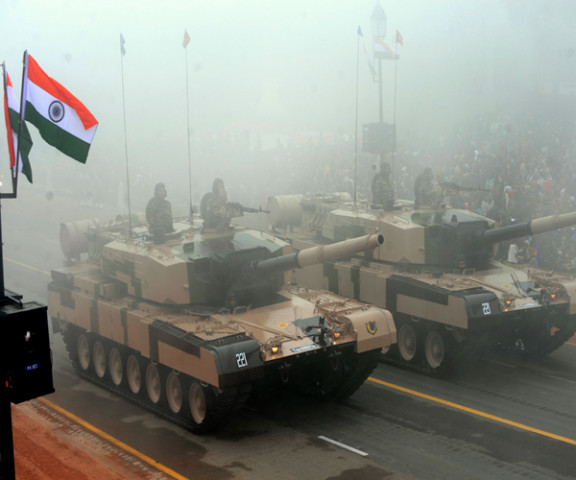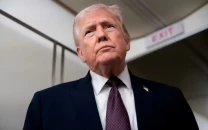Militarisation of the subcontinent
If there is to be peace, there need to be fewer guns pointing at each other and more diplomacy.

The Indian government has announced a 10 per cent increase in its military budget — pushing spending in this sector to a whopping 36 billion dollars. PHOTO: AFP/FILE
The Indian government has announced a 10 per cent increase in its military budget — pushing spending in this sector to a whopping 36 billion dollars. This increase is likely to trigger alarms — not only in Islamabad, but also in Beijing among other regional capitals. Yet it is the concern in Islamabad that is the one that is unsettling.
Just for some context, India’s increase alone — of over 3.5 billion dollars — equals Pakistan’s entire budget, which hovers around the four billion dollar mark. While it is not necessary that the increased budget is Pakistan-centric, perceptions in such cases are as important as reality. And the perception here is that most of India’s formations dot its western border.
China already has the largest army in the world with a huge budget. But a suspicious Pakistan cannot match the finances on conventional arms. Therefore, in turn, to compensate for quantity Pakistan has been pushed to ‘quality’ — and not in a good way — taking to developing smaller, quickly-deployable tactical nuclear weapons to counter the burgeoning Indian military machine. Aside from the dangers involved with such weapons, this trend is pushing an arms race between two countries with millions living below the poverty line.
It is India’s right to increase defence spending, and it may also be argued that this increase is in line with inflation and/or the increase of its overall budget. Yet, if one looks back only a year, the increase in India’s defence budget was just a tick over five per cent. Effectively, a year later India has doubled up on its increase. That’s sending the wrong signals.
Its complaints and concerns about Pakistan aside, Delhi must realise that it is the powerhouse in the subcontinent. This means that the onus of setting the trend is on it. At the end of the day, it’s a simple equation: If there is to be peace, there need to be fewer guns pointing at each other and more diplomacy. As the biggest stakeholder, Delhi must lead by example and send a responsible message: that it gives politics and diplomacy precedence over militarisation.
Published in The Express Tribune, February 19th, 2014.
Like Opinion & Editorial on Facebook, follow @ETOpEd on Twitter to receive all updates on all our daily pieces.



















COMMENTS
Comments are moderated and generally will be posted if they are on-topic and not abusive.
For more information, please see our Comments FAQ